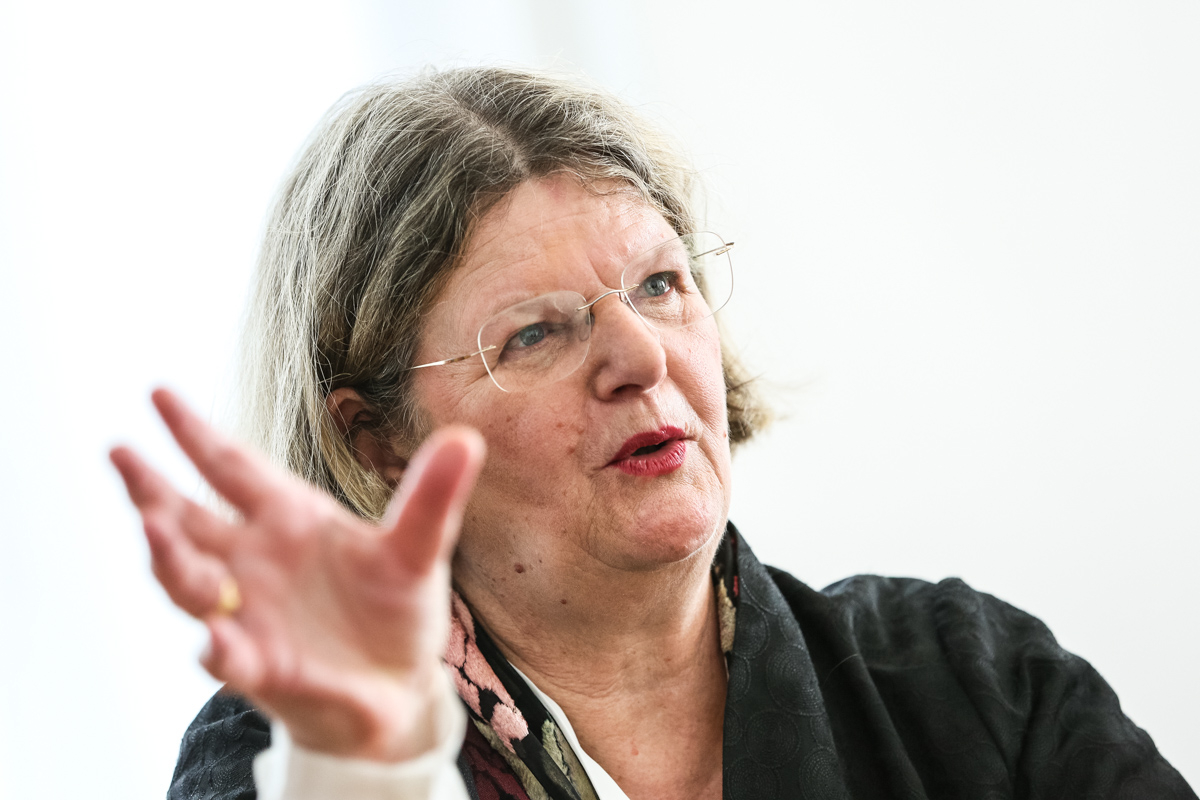The Mendeleev Museum of St Petersburg University has become the historical site of the European Physical Society

The Dmitri Mendeleev Museum Archive has been chosen as a new historical site of the European Physical Society (EPS). On 12 September, Petra Rudolph, president of the EPS, professor at the University of Groningen, PhD in physics, unveiled a commemorative plaque of the society.
‘It is an honour and pleasure for us to become the first Russian university to be awarded this plaque. We are especially glad that this important event is happening now, in 2019, which, as you all know well, has been declared the year of the Periodic Table of Chemical Elements, discovered by Dmitri Mendeleev,’ said Elena Chernova, Senior Vice-Rector of St Petersburg University.
When Dmitri Mendeleev demonstrated the Periodic Law to the world, he worked at St Petersburg University as a professor and lived at an educational institution. His former flat on the ground floor of the Twelve Collegia Building became a memorial museum three years after his death (in 1911). It is still open to visitors. The collection preserved not only household items belonging to the great scientist, but also his manuscripts, as well as a library that contains more than 20,000 items.
It should be remembered that 2019 sees the celebration of the 150th anniversary of the Periodic Table by the academic community. Mendeleev's discovery of the Periodic Law of Chemical Elements made a huge contribution to the development of science – not only chemistry, but also physics. This year was officially proclaimed by the UN as the International Year of the Periodic Table of Chemical Elements.
The discovery of the Periodic Law is not only part of the history of chemistry, but also part of the history of physics. The first stage of this development is, of course, the ‘Mendeleev’ stage. It is with Mendeleev’s flat that the law is connected. Dmitri Mendeleev lived here for 25 years, and here the Periodic Law was discovered.
Igor Dmitriev, Director of the Dmitri Mendeleev Museum Archive
‘The programme of historical sites locates those places that in some way entered the history of physical research, as well as those where important international scientific discoveries were made. At present, the programme lists 70 sites, and St Petersburg University is the 50th historical site that we have opened. We believe that the programme makes it possible for ordinary people to learn more about physics and about the discoveries that have changed many lives,’ said Professor Petra Rudolph.
Before the grand ceremony, St Petersburg University and the European Physical Society entered into a cooperation agreement, which includes student mobility.
The European Physical Society was created in 1968 to coordinate physical research, exchange scientific information in the field of physics, and develop physics teaching in Europe. At present, it consists of 42 organisations, including national academic associations and research centres of various countries. Among them are partnership organisations of St Petersburg University. Since 2011, the society has been assigning the status of a historical site of the EPS to institutes and laboratories in which outstanding achievements in physics were made, as well as to sites of key historical events for this field of science. To date, 45 institutions and laboratories in 21 European countries have already been marked as the EPS's historical site. These include two in Russia: the Institute of Spectroscopy of the Russian Academy of Sciences in the naukograd of Troitsk, Moscow (2018); and the Joint Institute for Nuclear Research in Dubna, Moscow Oblast (2013)
‘The EPS has a youth support programme. The youngest branch of our society consists of undergraduates, graduates, doctoral students, and postdocs. We feel a special connection with universities, because we help develop not only professionals, but also young minds, students who are just studying or preparing to defend their dissertations. I would be happy if the agreement that we are signing today could contribute to the development of student mobility, such as summer internships or short-term internships at universities that are part of the European Physical Society,’ said Petra Rudolf, the EPS president.
Petra Rudolph also added that the society promotes the exchange of best practices among universities that are members of the organisation. Among the challenges that the EPS members are facing now, she mentioned the need to adapt academic programmes so that graduates are ready to work not only in the academic, but also in the industrial environment. Elena Chernova, Senior Vice-Rector of St Petersburg University agreed that this is one of the challenges that the University faces.
‘The University accepts this challenge as well. That is why employers have appeared in the councils of our academic programmes: so that representatives of organisations where our graduates will work in the future can help us develop academic programmes. We have been engaged in this work since 2010 and have already gained a lot of experience,’ said Elena Chernova.
‘In our ever-changing world, the exchange of best practices is one of the development goals,’ emphasised Petra Rudolph.

